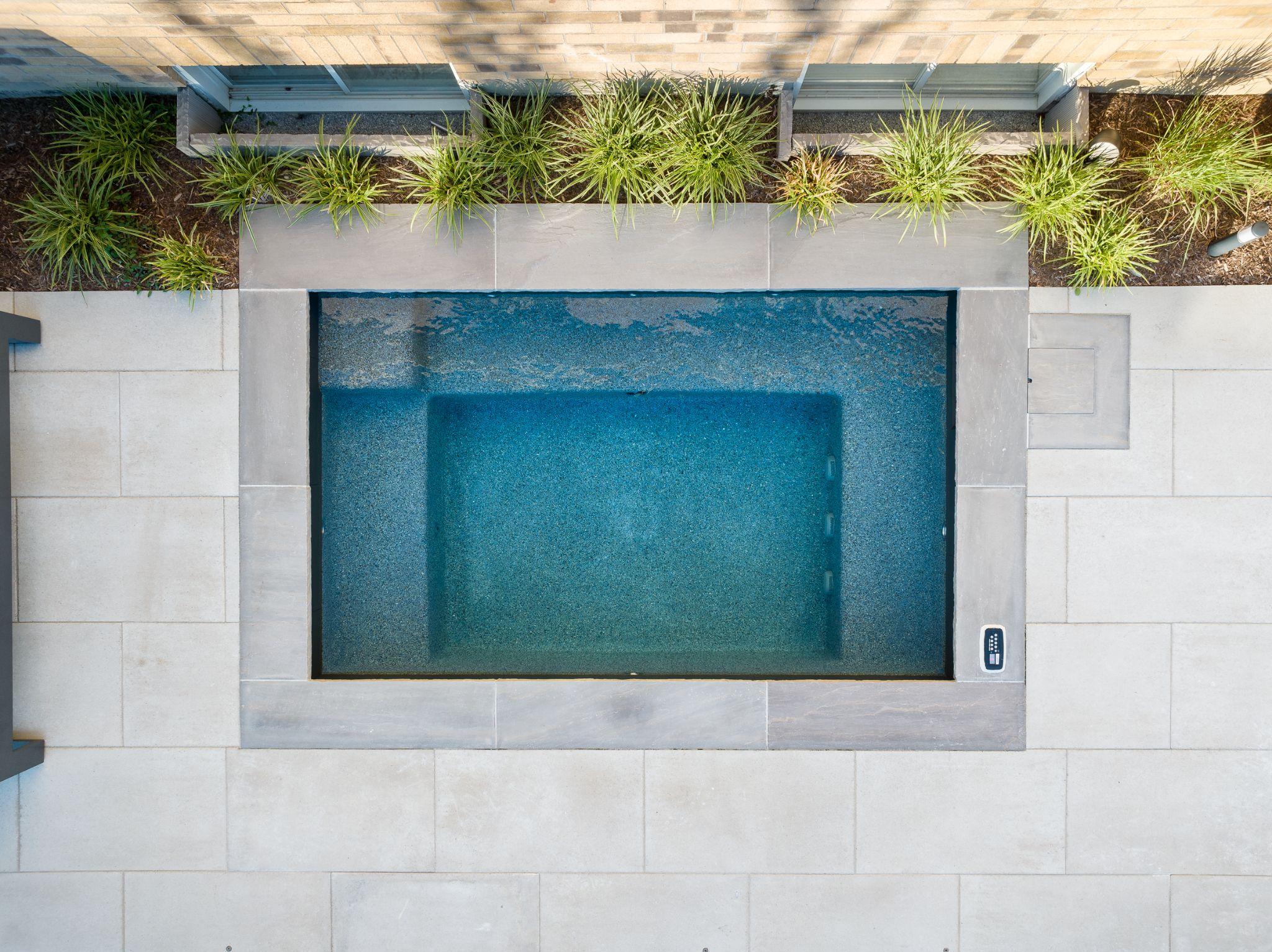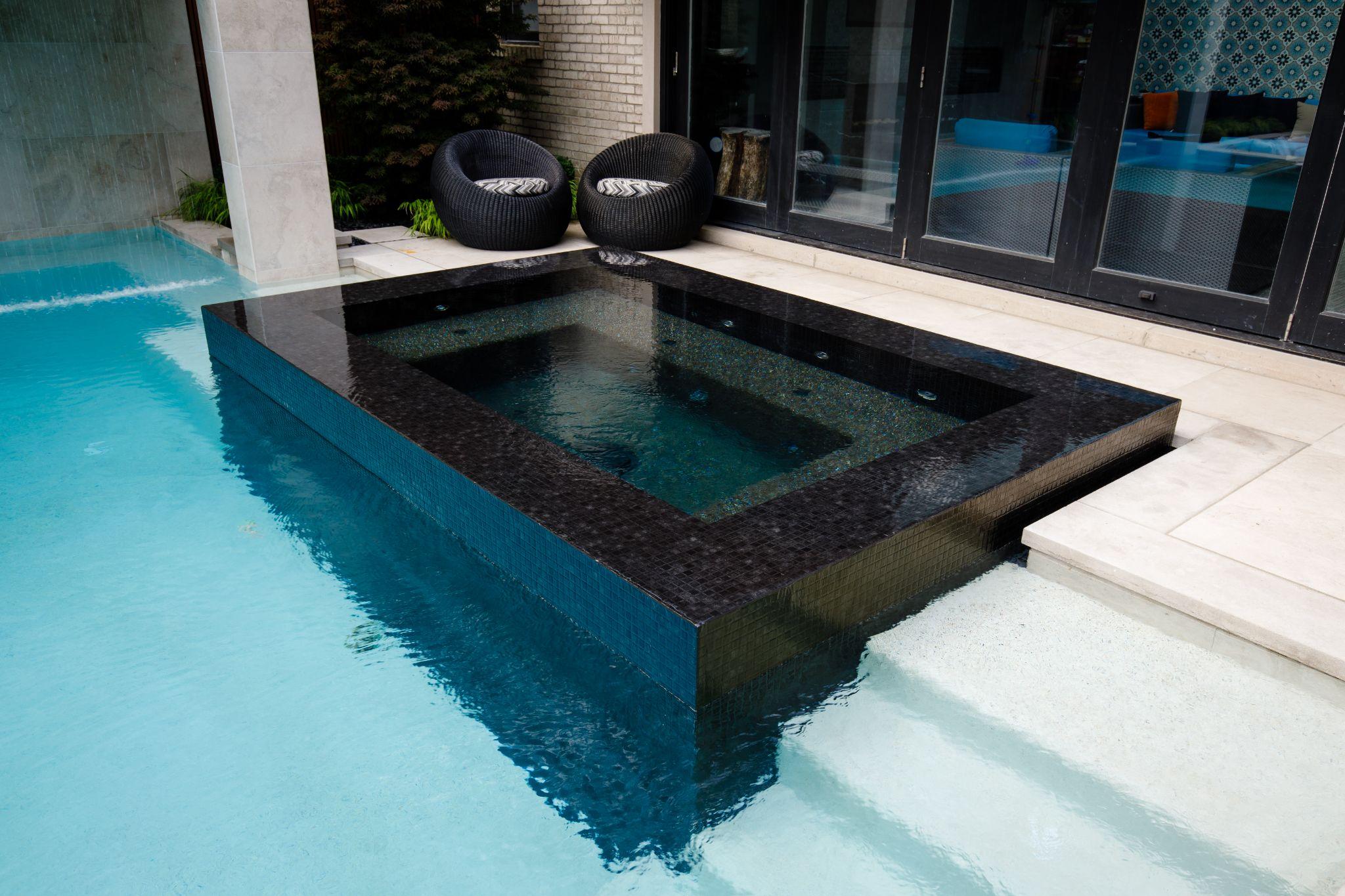The Ultimate Guide to Pool Maintenance
Owning a pool is one of life’s great joys—but without proper care, that shimmering blue oasis can quickly become a cloudy, green headache. Whether opening your pool for the season, handling weekly upkeep, or preparing for winter, knowing what to look for (and when to act) can save you time, money, and costly repairs.
In this guide, we’ll provide essential pool maintenance tips—from water level checks and skimmer cleaning to chemical balancing and seasonal procedures—so your pool stays clean, safe, and swim-ready all year.
Why Regular Pool Maintenance Matters

Think of your pool like a car—it needs regular checkups to stay in great shape. A quick weekly once-over can save you from major headaches later on. Preventing problems is easier and less costly than solving water and equipment problems later on.
Because water remains in your swimming pool for long periods of time, it must be filtered, circulated, and chemically treated to keep it clean, attractive, and enjoyable. You are relying on your pool equipment and your pool chemicals to do this job.
A quick peek at your pool can tell you a lot. If something looks off, it probably is—and it’s best to catch it early before it becomes a bigger issue.
1. CONSTANT VISUAL OBSERVATION

POOL WATER LEVEL
Make sure that the pool water level is at its proper level. Always use one convenient spot as a reference – preferably your skimmer mouth, steps, or ladder. Your pool’s water level should always be around the middle of the skimmer mouth opening. Water should be added whenever the water level drops more than 1” from this mark.
Your pool water level will fluctuate constantly. In springtime, your pool can collect enough rainwater to cause it to overflow. However, most of the time, your pool will lose water to evaporation, splashing, and backwashing. This can normally amount to 1” – 1½” of lost water per week.
- If the water level is too high (above the top edge of the skimmer mouth), your skimmer can not remove floating debris, and the water surface will become dirtier. In that case, the water level must be lowered by draining water through your backwash line.
- If the water level is too low (below the bottom edge of the skimmer mouth) your skimmer can start sucking air instead of water. This is usually accompanied by strange sucking noises coming from your skimmers. The filter pump will ‘cavitate’ or lose its prime by not getting enough water to operate, causing pool circulation to stop. The real danger then is that if you leave the filter pump running without water, you run the risk of seriously damaging the filter pump. Also, as the circulation stops, the pool will get dirty, the heater stops working, and chlorine stops dissolving in the chlorinator, which could cause the pool to turn cloudy or green.
- Add water as soon as possible!
Loss of water through evaporation is simply your pool water’s way of cooling down by balancing the temperatures of pool water and the ambient air above it. Evaporation increases with the difference between the water temperature and the air temperature. Wind also helps to speed up evaporation. Evaporation is most significant during cold nights in summer, spring, and fall on already/still heated pools. Covering your pool with a solar blanket could keep evaporation to a minimum and save on heating costs. The solar cover will, however, not allow the skimmers to work correctly and should be taken off and left off for 4-6 hours after shocking your pool as well. A solar cover also protects free chlorine from being destroyed by sunlight.
If your pool has an automatic water filling device, adding water to the pool whenever necessary will be done for you. However, you should still check your water level to ensure that the valve on the line supplying fresh water to the auto filler is on and that the device is set to the correct level and working correctly.
POOL OPERATION
Make sure that you can observe the action in front of the pool returns. If your pool looks still and lifeless or the water pressure feels weak, it’s time to do a little investigating—something might be clogging things up behind the scenes. As your skimmer baskets, filter pump baskets, or filter get dirty, circulation will slow down or even stop. Putting off cleaning them until your regularly scheduled day will not do much good, as this can lead to bigger problems later.
POOL SKIMMERS
Emptying skimmer baskets, especially during spring and fall, can be the best (and often the easiest) thing you can do for your pool. In backyards with plenty of trees, falling leaves could fill the skimmer baskets very fast—even several times a day. The more often you clean the skimmer baskets, the better for the operation and the look of your pool. During summer, once a week cleaning of the skimmer baskets is often sufficient.
POOL WATER QUALITY
Make sure that the water is blue and clear. When your pool water starts to turn hazy or green, it likely has run out of chlorine and needs a heavy dose to get back to its proper state. This is easily prevented by regular pool and spa water testing and chemical treatments done according to the readings taken. Also, check to see if your pool circulation system and chlorinator are functioning properly.
EMERGENCIES
Unusual sounds from equipment, complaints from bathers or any unusual signs should be attended to immediately to ensure the safety of the bathers and to prevent damage to your equipment and property.
2. WEEKLY POOL MAINTENANCE CHECKLIST

Regular weekly pool maintenance can be kept to a minimum by following the simple steps in this section.
POOL CLEANING
- Turn off your heater. The heater must be allowed to cool down for a minimum of 10 minutes before the filter pump is turned off. This is to prevent water from boiling inside the heater when there is no water flow. If water boils inside your heater, scale builds inside the heat exchanger each time. These deposits of scale significantly reduce the effectiveness of your heater and increase your heating costs.
- Remove floating debris with your leaf skimmer. If there are excessive amounts of leaves on the pool floor, scooping them out with the leaf skimmer can often speed up your vacuuming.
VACUUM THE POOL
- Assemble vacuuming equipment: Connect your Telescopic Pole to the Vacuum Head, then connect the Swivel End of your Vacuum Hose to the Vacuum Head.
- Submerge the vacuum head into the pool and fill up the vacuum hose with water by pushing the hose straight down the pool wall until water comes up the other end.
- Hook your vacuum hose into the deep-end skimmer. (Pro tip: use a vacuum plate so all those leaves and gunk don’t clog up your plumbing.)
- Close all other suction ports – close the valve on the shallow end skimmer line.
- Vacuum the pool—Start in the shallow end and go down the slope to the deep end. If the pool is excessively dirty, you might have to clean the skimmer and pump baskets and even backwash the filter in the middle of the vacuuming.
- Brush the pool—This will remove dirt, algae, stains, and scale from the pool walls and floor that vacuuming did not manage to remove. Brushing off algae is often the only way to ensure that chlorine can actually get to it and kill it. Afterwards, dead algae can be easily vacuumed up.
- Clean the waterline—You can use your wall brush connected to the telescopic pole or a sponge. Use only Pool cleaning chemicals specifically designed for pools, as household cleaners can harm pool water or the wall surface.
FILTER CLEANING
Your filter collects all the particles and debris from your pool water in the top layer of sand inside the filter. As the filter catches filterable particles from the pool water, the filtration improves since your pool filter catches smaller and smaller particles. At a certain point, pressure inside the filter will rise too high (approximately 5–10 psi above its normal running pressure) when the collected debris prevents the water from flowing through the system sufficiently (circulation slows down), and the filter will need to be backwashed. Backwashing your pool filter should become part of your routine weekly maintenance; however, sometimes (especially on indoor pools) letting the pressure build up over several weeks and not backwashing every week would be advisable.
- While you vacuumed the pool, you turned off the heater at the beginning of your maintenance, allowing it to cool off. If you have not done so before, do it now and wait 10 minutes before shutting off the filter pump.
BACKWASH SAND POOL FILTER
- Shut off the pump
- Roll out the backwash hose to the street (if your backwash is not plumbed in permanently) and check for kinks.
- Open up the valve on your Backwash line (if you have one installed)
- Depress the filter dial valve handle and turn to “BACKWASH”.
- Turn on the pump and begin to backwash. This should take about 2–3 minutes or until the backwash sight glass at the side of the dial valve shows clear water being discharged.
- Turn off the pump and rotate the dial valve handle to “RINSE”.
- Turn the pump on and rinse the filter head for about 20 seconds.
- Turn the pump off, rotate the handle back to the “FILTER” position, close the Backwash line valve, and roll up the hoses.
- While the pump is off, clean the filter pump basket as well.
- While the pump is off, open your automatic chlorine feeder so you can add slow-dissolving chlorine and adjust the flow according to the chemical test. Be sure to close the lid securely before turning on the pump!
Your filter is now clean, and you can turn the pump on.
ADDING CHEMICALS TO POOL WATER
- Test the chemical levels of your pool water – but do not add chemicals until the maintenance schedule for that day is complete. The type and amount of chemicals will be based on these readings and the size of your pool.
Pool water chemistry is described in detail later, but the basic steps in routine chemical maintenance are:
o BALANCE YOUR POOL WATER
Always make sure your water is balanced. If the tests are within their proper ranges, you may have to do nothing. If not, adjust TOTAL ALKALINITY first, then CALCIUM HARDNESS, then pH. Unbalanced water will irritate bathers and damage the pool.
o ADD CHLORINE
The goal here is safe water. By adding stabilized chlorine or bromine weekly, you ensure the safety of the bather by maintaining a 24-hour bacteria kill with continuous disinfection. The amount of stabilized chlorine product you add to the chlorinator will depend on the pool size, pool temperature, the weather, and the bather load you expect for the week. Even if you are not swimming, chlorine needs to be added since sunlight continuously destroys it.
o “SHOCK” YOUR POOL
By adding oxidizer to your pool (or “shocking” with LITE, BURN OUT, BURN OUT 35, BIO-CL or OXYSHEEN) weekly, you will remove non-filterable swimmer wastes and odours from your pool and restore clarity of your pool water. “Shocking” is the fastest way to get chlorine into your pool. When the chlorine reading on your chemical test is 0, you cannot wait for the chlorine to dissolve in the chlorinator, and you must add shock immediately. Shock is often required when your pool runs out of chlorine and starts to change colour or turns cloudy. Shock your pool according to the product specifications and the size of your pool.
o ADD ALGICIDE
Chlorine will help you control algae in your pool, but the chlorine level will fluctuate. Applying algicide weekly helps prevent algae from multiplying too fast and overtaking your pool water if your chlorine level goes down to 0 ppm.
ADDING WATER TO YOUR POOL
As mentioned earlier, the water level should always be kept at the middle of the skimmer mouth. You are constantly losing water to evaporation, backwashing, and splashing, so it is a good idea to make up for the lost water while servicing your pool.
3. SPRING POOL OPENING

Let’s be honest—getting your pool open for spring isn’t glamorous. It’s a bit of a workout between scooping leaves and reconnecting equipment. But hey, it means summer’s coming! Our service technicians are also always ready to do this job for you. The whole idea is to remove the water with leaves that have accumulated on top of your pool cover over the winter, unplugging winterized lines, and put together all pool equipment, deck equipment, and plumbing that have been disconnected and removed for winter.
You can open your pool as early as the ice melts on the top of your pool. You can wait until late in the spring; however, the longer you let the water sit, the greater the chance that your water on top and underneath your cover (in case holes develop in the cover) starts turning green (even black) and smelly. Recent laws about removing stagnant water in backyards to prevent mosquito outbreaks may force you to open your pool early.
- To remove your pool winter cover, you must first pump the water off the cover with a gas or electric pump (you can rent a pump from an Equipment Rental Store near you). After the cover is removed, it should be cleaned with a cover cleaner. Rinse the cover off and let it dry, fold it and store it inside. Empty water bags and roll them up for storage.
- CONCRETE POOLS: If any staining has occurred on the pool walls above the water line during the winter months, this area can be washed with a mixture of muriatic acid and water. Always pour acid into water (1/3 acid and 2/3 water). Rinse thoroughly afterwards, and wear proper safety gear when using acid or chlorine.
- Install underwater light and equipment, such as a diving board and base, ladder, handrail, and life rope. Remove plugs from your return lines in the pool and install return fittings.
- Install a pressure gauge on the dial valve at the top of the filter. Install the drain plug located on the bottom of the filter. Re-connect your chlorinator. Install two plugs at the bottom of your pumps. NOTE: Some plugs may have O-rings or washers; if neither is present, you must apply Teflon tape or pipe dope.
- Install plugs/Close drain-cocks in heater and re-connect pressure switch tube. Check the heater instructions for the correct lighting procedure, but be extremely cautious if you are going to do this yourself.
- Prepare the skimmer for summer by removing the inner tube. Remove the plug at the bottom of the skimmer and pull out the expansion hoses from both holes. If you have two skimmers, the front hole of the shallow end skimmer usually doesn’t have a plug. You will see two holes at the bottom of the deep end skimmer. Set the trimmer cover disc halfway over the hole closest to the pool edge (this line is going to the main drain at the bottom of the pool). Put skimmer baskets into the skimmers.
- Fill the pool to the normal water level. Prime the system and start in the drain position to remove the antifreeze left in the suction line. After 1 minute, switch to the filter position.
- Add your chemicals to balance your water and chlorine.
4. FALL POOL CLOSING

Winterizing your pool is not difficult; the only point to remember is that water increases its volume by about 10% when it freezes, breaking anything in its path if it has no room to expand. So the trick is to remove water from all enclosed areas (e.g. lines and equipment) and prevent water accumulation in these places through winter. The only place you’ll want the water is in the pool itself. Again, our service professionals have all the skills, tools and experience needed to winterize your pool correctly.
- Lower the pool water level 1 inch below the bottom of the returns. To lower your water level, place a vacuum hose in the skimmer, turn the vacuum head upside down in the pool, and, with the filter pump on and the dial valve set to “DRAIN” or “WASTE,” drain as much as needed. If you have a pool with a spa, the spa has to be drained to the bottom.
- Remove deck equipment – Ladder (remove wedges from anchors), Diving board and stand, and handrail.
- Remove the underwater light. Attach a weight, put it in a plastic bag, and sink it to the bottom of the pool.
- Disconnect the chlorinator at both pipes, remove all chlorine pucks/sticks, drain it and store.
- Remove two plugs from all the pumps and one plug from the bottom of the filter tank, allowing the water to drain. Remove pressure gauges from the filter. If you have a check valve on your suction side of the filter pump, the ball valve before it needs to be taken apart.
- Remove the plugs from your heater (two or more, depending on the make and model). Disconnect the pressure switch inside the heater. Turn the main gas valve off. Open the pressure relief valve by the inlet/outlet pipe.
- Remove return fittings, allow lines to drain, and blow out all remaining water with a wet vacuum or blower. Wrap ‘Teflon’ tape around all ABS plug threads and install them into all return lines in the pool.
- Attached spas will also need the suction lines from the main drains at the bottom of the spa and the jet lines completely drained and blown out.
- Remove all internal parts from the skimmer. Insert the expansion tube in the hole closest to the pool and install the expansion or ABS plug. The hole furthest from the pool must be drained and blown out with a wet vac before inserting the expansion tube. Applying bio-degradable anti-freeze to the skimmer, flowing into this line. Install an expansion or ABS plug. Place the inner tube in the skimmer and inflate, ensuring one end protrudes through the skimmer’s mouth opening, and the other touches the bottom of the skimmer. Replace the skimmer lid in the normal position.
- Fill water bags, add winter chemicals to the water, spread out your winter pool cover, and weigh it down with the water bags.
Stay Ahead of Pool Problems

Routine pool maintenance isn’t just about keeping your water looking beautiful—it’s about protecting your investment and ensuring a safe, enjoyable space for everyone who dives in. From quick weekly tasks like brushing and skimming, to seasonal preparations like winterizing and spring opening, every step you take now prevents bigger problems.
Not sure where to start? Or just tired of doing it all yourself? Our experienced pool professionals are here to help with tailored maintenance services that keep your pool in perfect condition, without the stress.
Ready to spend more time swimming and less time scrubbing? Contact us today to learn more or schedule a visit.
